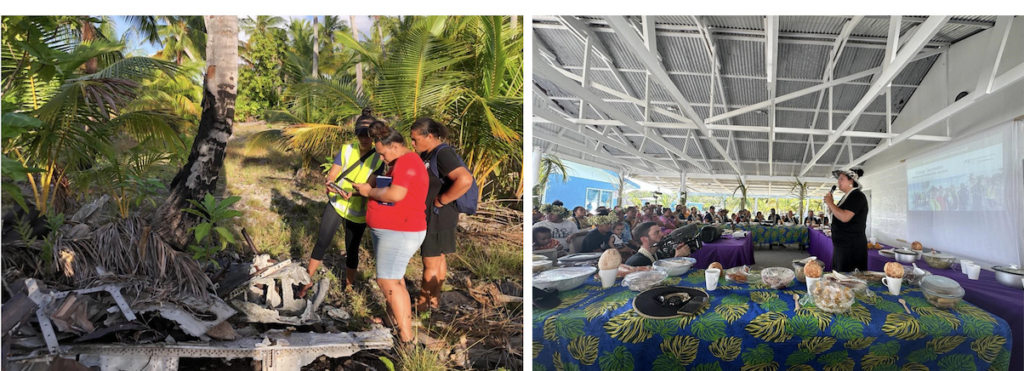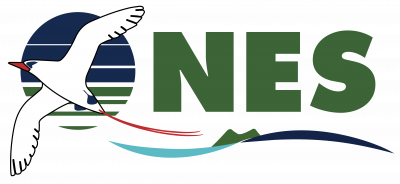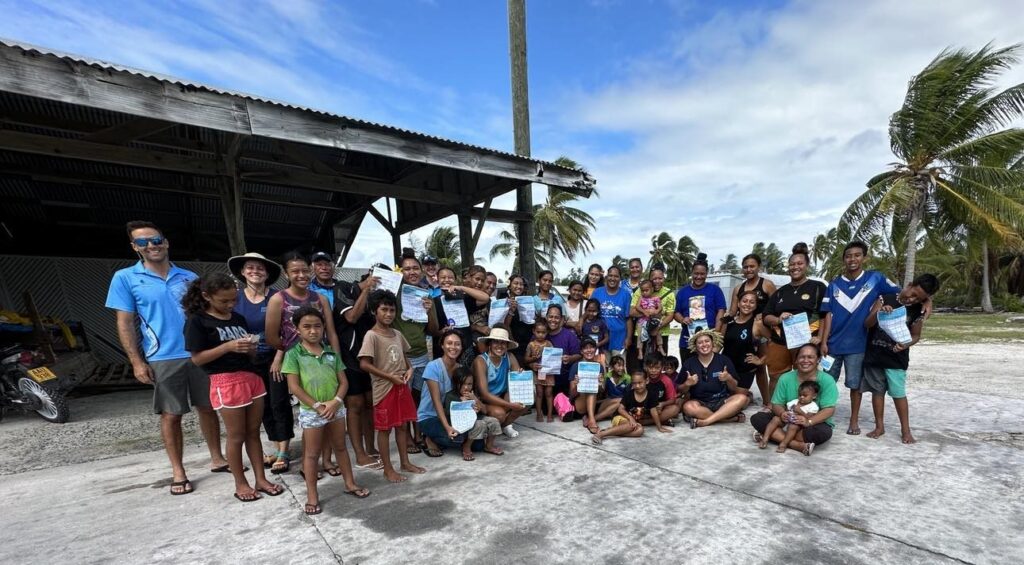The National Environment Service’s own Terena Koteka-Wiki and Jessie Nicholson joined a team of nine locally based research crew for a research expedition to the Northern group island of Tongareva. This is the first expedition in the National Geographic’s history to have an entire locally based science crew. Sharks Pacific, the Ministry of Marine Resources (MMR), NES and National Geographic Pristine Seas joined forces to conduct scientific research surveys as a key part of this expedition. The expedition was for 12 days from June to July 2023.
Dr. Jessica Cramp, who is the founder and executive director of the local Cook Islands Non-Government Organization (NGO) Sharks Pacific, was the expedition’s chief scientist. Each participating member of these organisations conducted research, including marine and terrestrial surveys. Jessie and Terena were grateful to represent NES to utilize local knowledge. The two Penrhyn NES Environment Officers, Anarei Akatapuria and Tepepetau Williams, assisted in conducting bulky waste surveys and biodiversity surveys.
Jessie and Terena provided training to the NES Penrhyn staff on waste and biodiversity surveys using the Kobo toolbox. Kobo is an application used to streamline the collection of data for effective analysis and decision making. The surveys were conducted on Te Tautua and Omoka islands, with additional biodiversity surveys conducted on Pahonu and Tapuniu.
While conducting the biodiversity surveys, Jessie and Terena aimed to identify specific species including ship rats (kiore toka), Pacific rats (kiore), blue noddy, coconut crabs, spotted scorpion and seahorses. These were species identified by Natural Heritage Trust as an area of concern or general interest. Results from the waste and biodiversity surveys will increase awareness and provide better understanding of the types of waste and biological diversity present on each of the islands.
One type of biodiversity survey, called BioBlitz, focused on finding and identifying as many living things as possible on Omoka with the assistance of local youth and families. Participants were tasked with taking pictures of plants, insects and the wildlife around them, while focusing on identifying the specific species that were presented on species identification cards. Pakaiere Isaaka, a local Penrhyn islander, identified the spotted scorpion which was last officially recorded in the 1980s.
Jessie and Terena also assisted in conducting Baited Remote Underwater Video Stations (BRUVS) surveys and shark tagging research by Sharks Pacific. The results from this collaborative expedition will contribute towards better biodiversity monitoring and reporting, as well as help inform decision making relating to marine and terrestrial conservation in the Cook Islands.








